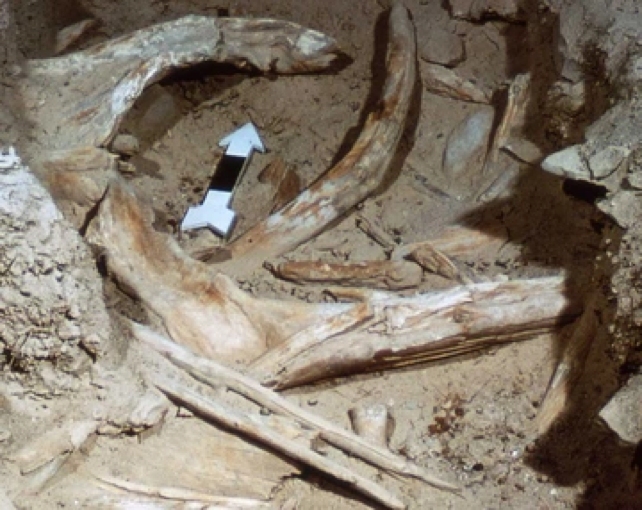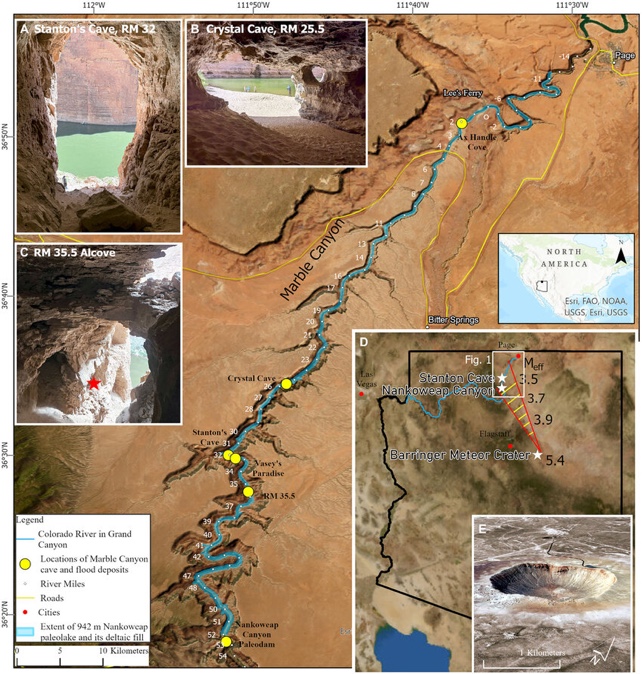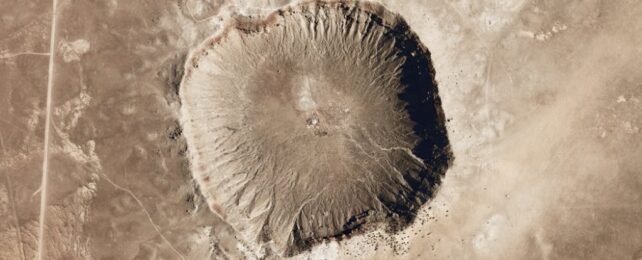Two of Arizona's most famous landmarks may be linked by cosmic violence: the asteroid that gouged out Meteor Crater may have also caused the formation of an ancient lake in the Grand Canyon.
This surprising connection between Arizona's world-renowned geological features stretches back 56,000 years, to when a 300,000 ton nickel-iron asteroid slammed into the Colorado Plateau with the force of over 150 atomic bombs, creating the largest meteor crater in the United States.
The resultant impact-generated earthquake may have caused a rockslide in the Grand Canyon, damming the Colorado River and temporarily creating a body of water 80 kilometers (50 miles) long and more than 100 meters (around 370 feet) deep in what is today Nankoweap canyon.
Related: The Grand Canyon Is Missing a Billion Years' Worth of Rocks. Scientists May Know Why
Meteor Crater (also known as Barringer Meteor Crater) is a relatively young and exceptionally well-preserved crater just west of the city of Winslow, Arizona. The asteroid that produced it may have been only 30 to 50 meters across, but the impact excavated 175 million metric tons of limestone and sandstone, forming a crater 1.2 kilometers across and about 180 meters deep. Today, such an impact would wipe out an urban center the size of Kansas City.
The newly released study encompasses more than five decades of research, an international team of collaborators, and an evolution of scientific dating techniques.
The evidence for the Nankoweap paleolake hinges on driftwood and lake sediments found in Stanton's Cave, which is situated almost 45 meters above the Colorado River. Carrying the driftwood up to the cave "required a 10 times bigger flood level than any flood that has happened in the past several thousand years," says Karl Karlstrom, a geologist at the University of New Mexico and co-lead author of the study.

The Stanton Cave driftwood was initially collected in 1970 and radiocarbon dated in the 1980s, suggesting it was around 44,000 years old – a figure that was at the limit of radiocarbon testing at that time. Additional driftwood samples were later collected from another high alcove, situated 33 meters above the Colorado River and a few kilometers downstream of Stanton's Cave.
The two separate driftwood samples were independently dated, using different techniques, at different labs. The researchers also analyzed the lake sediments using luminescence dating, which measures the energy of light emitted by a certain material.
This separate dating method, distinct from radiocarbon dating, provided "statistically indistinguishable" dates for the driftwood samples and sediments, converging to 55,600 years ago.
Additionally, researchers found ancient evidence of a natural dam about 35 kilometers downstream of Stanton's Cave. In places, this ancient dam material is overlain with rounded river cobbles that were deposited as the Colorado River overtopped the dam across a span of about 1,000 years.

Overall, the coinciding dates of the impact, landslide, driftwood, and lake sediments support the idea that the Nankoweap paleolake was formed by a seismic event generated by an asteroid traveling with a cosmic velocity of over 11 kilometers per second, producing a 10-15 megaton event upon impact.
The resulting 5.4 magnitude earthquake traveled the 100 miles to the Grand Canyon in seconds, where it hit with an effective magnitude of 3.5 and caused a landslide that dammed the Colorado River and formed the Nankoweap paleolake.
The researchers do acknowledge the possibilities that the Nankoweap paleolake was the result of a natural landslide, or an unrelated earthquake.
"Nevertheless, the meteorite impact, the massive landslide, the lake deposits, and the driftwood high above river level are all rare and unusual occurrences" whose ages converge on a narrow slice of time around 55,600 years ago, concludes Karlstrom.
This research is published in the journal Geology.
